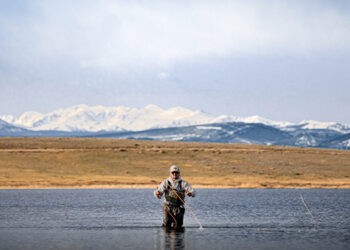 Stan Shingles, the Assistant Vice President of University Recreation at Central Michigan University, answers a few of our questions.
Stan Shingles, the Assistant Vice President of University Recreation at Central Michigan University, answers a few of our questions.
1. How did you get started in the industry?
I originally started my career in community recreation. I was working in a community center in the community that I went to college in. I really enjoyed what I was doing, but I always had an affinity for the university environment. As I started to think about career options, I liked the dynamics of campus recreation. I had never worked in campus recreation as an undergraduate. I never had any experience in campus recreation, outside of being a participant. I was sitting in my office and I was thinking it was time for something different. I knew the intramural sports director at Illinois State, so I called him and asked if they had any graduate assistant positions open. So I actually quit a full-time job to go back to graduate school, and off I went into my career.
2. Throughout your time at Central Michigan University, what is one of the biggest changes that has been made within University Recreation?
I think it is more of a business than it has ever been before. The foundation of campus recreation was programming, especially intramurals. Since that time, we are now building signature facilities for collegiate recreation on our campuses. These flagship facilities have a huge value proposition to them, and so not only are we required to have programming and management of facilities, but you must have a business acumen as well. There is a business proposition to managing these facilities, whether is it managing budgets or how you are generating revenue by creating new programs.
3. Throughout your time at CMU, what is one accomplishment you are most proud of?
I think for the university our commitment to student success would be the greatest accomplishment. Investments are being made and assessments are being done to really understand today versus our relevance 20 years ago. We continue to try to move forward rather than stand still or move backwards and that is a huge commitment, especially in today’s culture of shrinking state funding and rising tuition. Having to justify the “why” of our relevance on college campuses. I think we do a great job of that professionally with our research and our professional development to help individuals understand how they connect to student success.
4. What is one lesson you have learned that other recreation professionals can learn from?
My favorite saying in life is, “luck is when preparation meets opportunity.” I think we need to take advantage of the opportunities that are presented to us. One of the things we are starting to see in collegiate recreation is our colleagues from around the country are elevating to significant executive leadership positions within their universities. Our professionals are being called upon to do things that are often outside the domain of collegiate recreation, and they do it well because of the culmination of experiences. Whether it is managing student unions, event centers or working with student affairs administration, our people have the skill sets and there are a lot who have elevated to that level. That is something that makes me extremely proud. We are not labeled as just collegiate recreation professionals; we are labeled as professionals.
5. Tell us one fun fact about yourself that others may not know.
My son is the director of collegiate recreation at Hamline University. He grew up in collegiate recreation facilities, with never having an interest in being in this role. Then one day you wake up and realize, this is what you know. So as he finished undergraduate school and graduate school and started to move out into the profession, we never thought in a million years he would go into university administration, but now he is the director of campus recreation.










